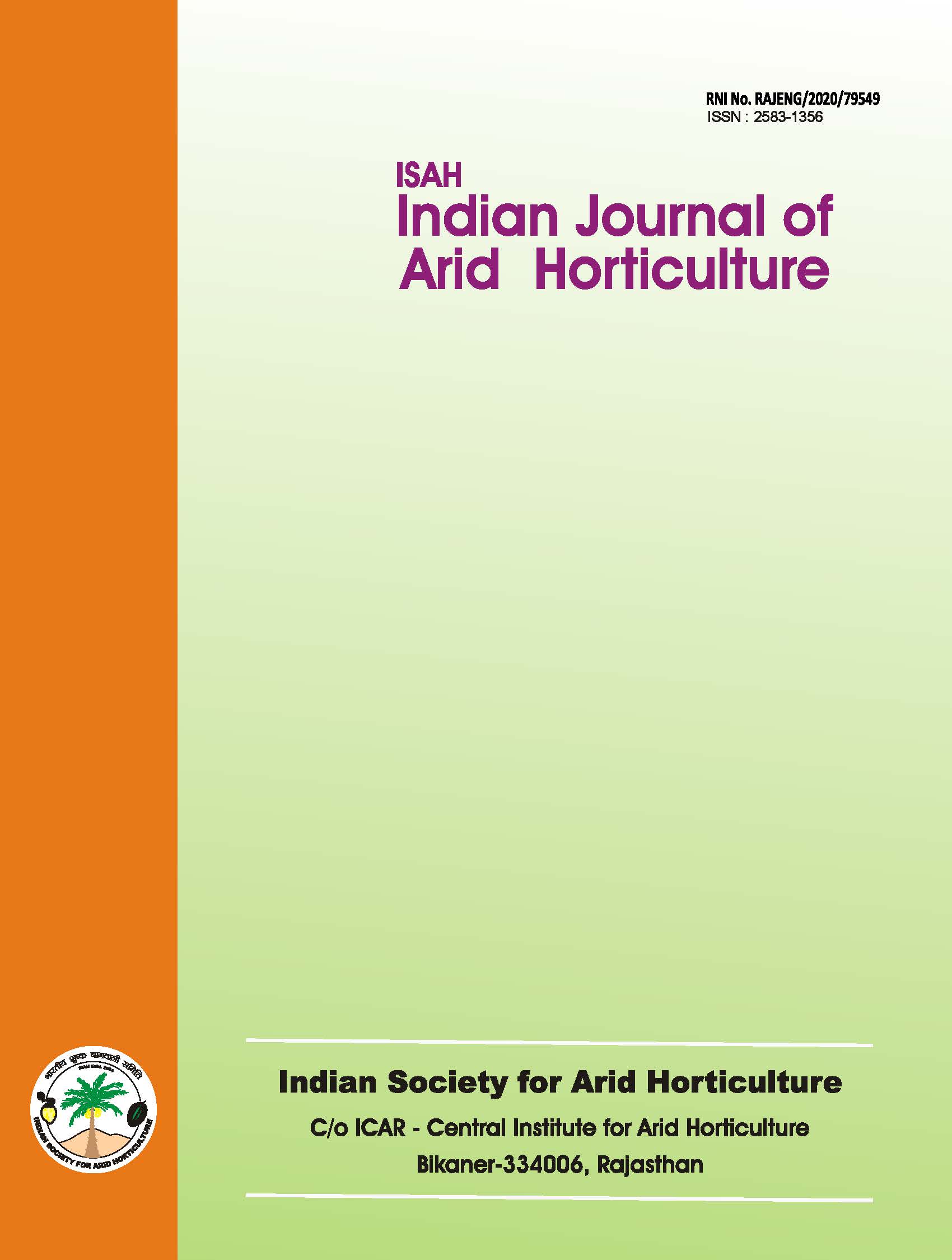Evaluation of rhizobial isolates from pigeonpea nodules for characterization of fast growing antagonist of Fusarium udum
Keywords:
Fusarium, Rhizobium, Pseudomonas, phosphate solubilisationAbstract
Eight isolates of rhizobia were isolated from pigeonpea nodule and identified and characterized by physiological and biochemical tests. Isolate KCC5 showed maximum potential antagonistic characters. Phylogenetic analysis of 16S rDNA sequences of KCC5 with other reference strains. Form this analysis, KCC5 aligned to same cluster (100% bootstrap value) with reference strains of Sinorhizobium fredii. All the strains of Pseudomonas spp. were positive to IAA production and phosphate solubilisation. Only KCC2 and KCCS were produced siderophore. KCCS produced maximum quantity of siderophore. In dual culture technique, maximum inhibition of F. udum recorded in the case of KCC5. Cell free culture filtrate of KCCS also restricted the hyphal growth of F. udum. Morphological abnormalities in the hyphae of Fusarium udum obtained from the zone of interaction during dual culture were observed by light microscopy. Fragmentation and degradation of mycelia and loss of structural integrity of conidia of F. udum were clearly observed under scanning electron microscopic analysis. In iron supplemented (30 μM Fe*) medium inhibition of the pathogenic fungi was reduced. It was found that under iron-deficient condition KCC5 inhibited maximum vegetative growth of F. udum as compared to under iron-sufficient conditions.Downloads
References
Antoun, H., Beauchamp, C.J., Goussard, N., Chabot, R., & Lalinde, R. (1998). Potential of Rhizobium and Bradyrhizobium species as plant growth-promoting rhizobacteria on non-legumes: Effect on radishes (Raphanus sativus L.). Plant Soil, 204, 57-67.
Antoun, H., Bordeleau, L.M., & Gagnon, C. (1987). Antagonism between Rhizobium meliloti and Fusarium oxysporum in relation to symbiotic efficiency. Can. J. Microbiol., 58, 75-78.
Arora, N.K., Kumar, V., & Maheshwari, D.K. (2000). Isolation of both fast and slow-growing rhizobia effectively nodulating a medicinal legume, Mucuna pruriens. Symbiosis, 29, 121-137.
Arora, N.K., Kang, S.C., & Maheshwari, D.K. (2001). Isolation of siderophore-producing strains of Rhizobium meliloti and their biocontrol potential against Macrophomina phaseolina that causes charcoal rot of groundnut. Curr. Sci., 81, 673-677.
Beauchamp, C.J., Dion, P., Kloepper, J.W., & Antoun, H. (1991). Physiological characterization of opine-utilizing rhizobacteria for traits related to plant growth-promoting activity. Plant Soil, 132, 273-279.
Booth, C. (1971). The Genus Fusarium. Commonwealth Mycological Institute, Kew, England.
Breil, B.T., Borneman, J., & Triplett, E.W. (1996). A discovered gene fuA, involved in the production of the ribosomally synthesized peptide antibiotic trifolitoxin. J. Bacteriol., 178, 4150.
Carson, K.C., Meyer, J.M., & Dilworth, M.J. (2000). Hydroxamate siderophore of root nodule bacteria. Soil Biol. Biochem., 32, 11-21.
Chakraborty, U., & Chakraborty, B.N. (1988). Interaction of Rhizobium leguminosarum and Fusarium solani f.sp. pisi on pea affecting disease development and phytoalexin production. Can. J. Bot., 67, 1698-1702.
Derylo, M., & Skorupska, A. (1993). Enhancement of symbiotic nitrogen fixation by vitamin-screening fluorescent pseudomonads. Plant Soil, 154, 211-217.

